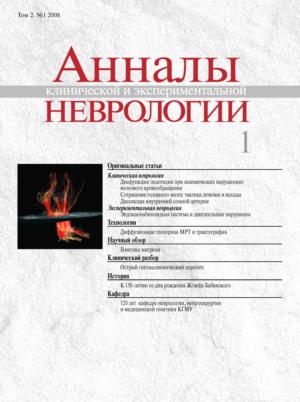We present the first case report of licorice overdose in Russian literature. 28-year-old man had severe untreatable arterial hypertension, hypokaliemia, quadriparesis and pain in the calf after acute respiratory disease. Additional laboratory tests disю covered metabolic alkalosis, breath dysfunction, myoglobinuria and very high level of creatine phosphokinase in serum. It was discovered that this man was a codeineюabuser and took combined medicine containing codeine and licorice («Codelac») which is free for sale without prescription in pharmacies in Russia. The dose of licorice was up to 12 g per day in the course of half a year (up to 60 pills per day). The prescription of aldosterone antagonist was successful, and after 3 weeks of taking spironolactone the patient’s condition and all laboratory tests became normal. Licorice inhibits 11-beta-hydroxisteroid dehyю drogenase type 2 and leads to symptomatology of secondary hyperaldosteronism. There are many case reports of licorice overdose by old people with chronic obstructive syndromes in the medical literature. Some cases result to lethal outcome due to breath dysfunction with apnoea. We consider that codeineю abusers who are taking free for sale medicines containing codeine and licorice are in the risk group for licorice overdose.
Acute hypokaliemic paralysis as a result of licorice overdose
- Authors: Suponeva N.A.1, Piradov M.A.1, Nikitin S.S.2,3, Alferova V.P.1
-
Affiliations:
- Research Center of Neurology
- Association of Neuromuscular Disorders Specialists
- Medical Center “Practical Neurology”
- Issue: Vol 2, No 1 (2008)
- Pages: 47-51
- Section: Clinical analysis
- URL: https://www.annaly-nevrologii.com/journal/pathID/article/view/410
- DOI: https://doi.org/10.17816/psaic410
- ID: 410
Cite item
Full Text
Abstract
About the authors
Nataliya A. Suponeva
Research Center of Neurology
Author for correspondence.
Email: nasu2709@mail.ru
ORCID iD: 0000-0003-3956-6362
D. Sci. (Med.), Corr. Member of the Russian Academy of Sciences, Head, Department of neurorehabilitation and physiotherapy
Russian Federation, MoscowMichail A. Piradov
Research Center of Neurology
Email: nasu2709@mail.ru
ORCID iD: 0000-0002-6338-0392
D. Sci. (Med.), Professor, Academician of the Russian Academy of Sciences, Director
Russian Federation, 125367, Russia, Moscow, Volokolamskoye shosse, 80Sergey S. Nikitin
Association of Neuromuscular Disorders Specialists; Medical Center “Practical Neurology”
Email: nasu2709@mail.ru
Russian Federation, Moscow
V. P. Alferova
Research Center of Neurology
Email: nasu2709@mail.ru
Russian Federation, Moscow
References
- Гусев Е.И., Коновалов А.Н. Неврология и нейрохирургия. М.: Медицина, 2000.
- Калинин А.П., Котов С.В. Неврологические расстройства при эндокринных заболеваниях. М.: Медицина, 2001.
- Козловская Л.В., Фомин В.В., Моисеев С.В. и др. Гипокалиемия у взрослых. Справочник поликлинического врача. М., 2005; т. 4: 3.
- Сердюкова Н.Б. Наркотики и наркомания. Ростов на Дону: Феникс, 2000.
- Armanini D., Fiore C., Mattarello M. et al. History of the endocrine effects of licorice. Exp. Clin. Endocrinol. Diabetes 2002; 110: 257–261.
- Conn J. Primary aldosteronism, a new clinical syndrome. J. Lab. Clin. Med. 1955; 45: 6–17.
- Conn J., Rovner D., Cohen E. Licorice-induced pseudoaldosteronism. Hypertension, hypokaliemia, aldpsteronopenia, and supressed plasma renin activity. JAMA 1968; 205: 492–496.
- Cooper M., Bujalska I., Rabbitt E. et al. Modulation of 11beta-hydroxysteroid dehydrogenase isozymes by proinflammatory cytokines in osteoblasts: an autocrine switch from glucocorticoid inactivation. J. Bone Miner. Res. 2001; 16: 1037–1044.
- Farese R., Biglieri E., Shackleton C. et al. Licorice-induced hypermineralocorticoidism. N. Eng. J. Med. 1991; 325: 1223–1227.
- Kageyama Y., Suzuki H., Saruta T. Glycyrrhizin induces mineralo-corticoid activity through alterations in coltisol metabolism in the human kidney. J. Endocrinol. 1992; 135: 147–152.
- Kossintseva I., Wong S., Johnstone E. et al. Proinflammatory cytokines inhibit human placental 11beta- hydroxysteroid dehydrogenase type 2 activity through Ca2+ and cAMP pathways. Am. J. Physiol. Endocrinol. Metab. 2006; 290: 282–288.
- Stedwell R., Allen K., Binder L. Hypokalemic paralyses: a review of the etiologies, pathophysiology, presentation, and therapy. Am. J. Emerg. Med. 1992; 10: 143–148.
- The Japan Society for Oriental Medicine Precautionary Instruction. In: Introduction to KAMPO. Elsevier, Tokyo, 2005: 90–91.
- Yasue H., Itoh T., Mizuno Y. et al. Severe hypokalemia, rhabdomyolysis, muscle paralysis, and respiratory impairment in a hypertensive patient taking herbal medicines containing licorice. Intern. Med. 2007; 46: 575–8.
Supplementary files








